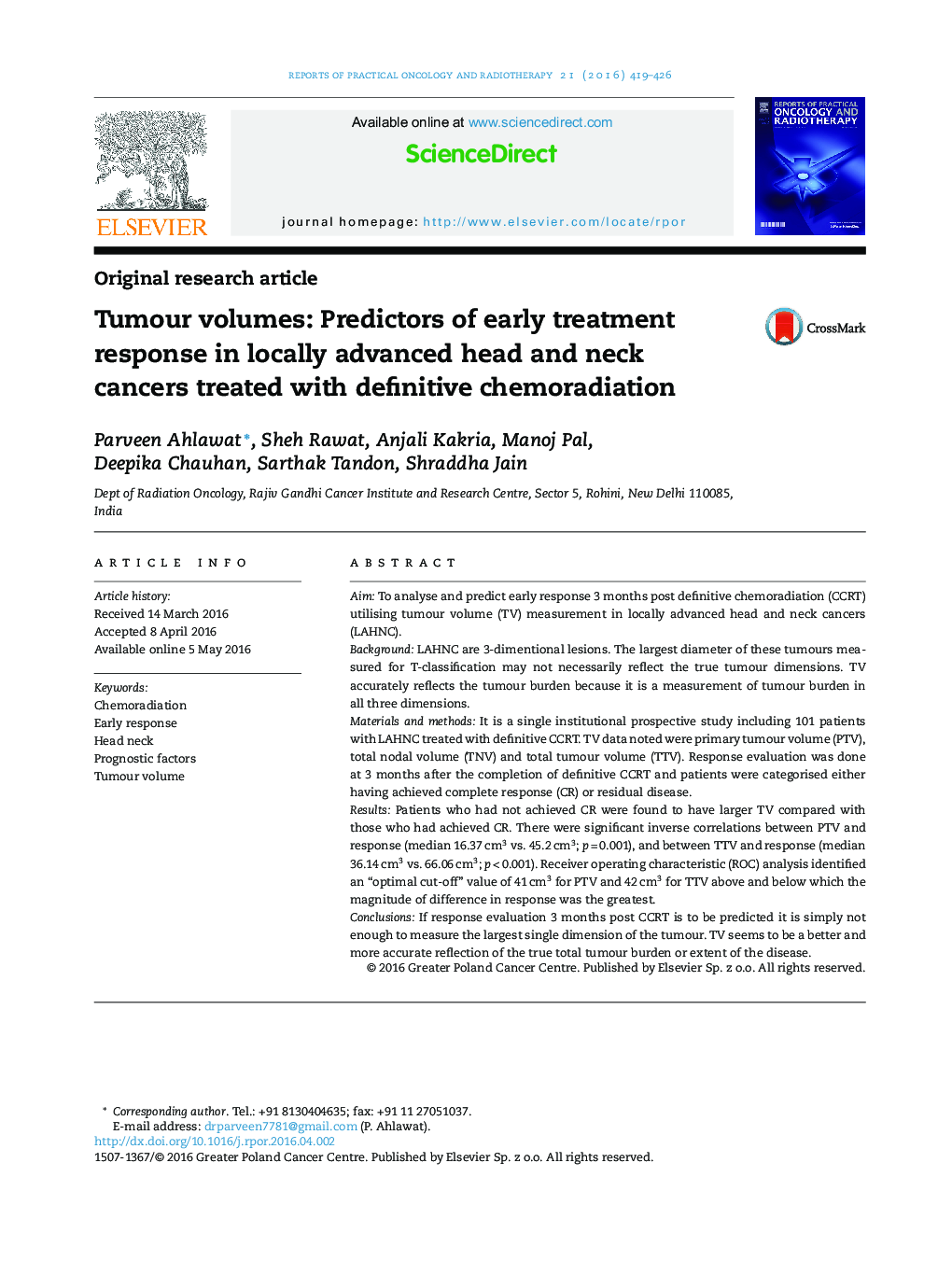| Article ID | Journal | Published Year | Pages | File Type |
|---|---|---|---|---|
| 1856952 | Reports of Practical Oncology & Radiotherapy | 2016 | 8 Pages |
AimTo analyse and predict early response 3 months post definitive chemoradiation (CCRT) utilising tumour volume (TV) measurement in locally advanced head and neck cancers (LAHNC).BackgroundLAHNC are 3-dimentional lesions. The largest diameter of these tumours measured for T-classification may not necessarily reflect the true tumour dimensions. TV accurately reflects the tumour burden because it is a measurement of tumour burden in all three dimensions.Materials and methodsIt is a single institutional prospective study including 101 patients with LAHNC treated with definitive CCRT. TV data noted were primary tumour volume (PTV), total nodal volume (TNV) and total tumour volume (TTV). Response evaluation was done at 3 months after the completion of definitive CCRT and patients were categorised either having achieved complete response (CR) or residual disease.ResultsPatients who had not achieved CR were found to have larger TV compared with those who had achieved CR. There were significant inverse correlations between PTV and response (median 16.37 cm3 vs. 45.2 cm3; p = 0.001), and between TTV and response (median 36.14 cm3 vs. 66.06 cm3; p < 0.001). Receiver operating characteristic (ROC) analysis identified an “optimal cut-off” value of 41 cm3 for PTV and 42 cm3 for TTV above and below which the magnitude of difference in response was the greatest.ConclusionsIf response evaluation 3 months post CCRT is to be predicted it is simply not enough to measure the largest single dimension of the tumour. TV seems to be a better and more accurate reflection of the true total tumour burden or extent of the disease.
